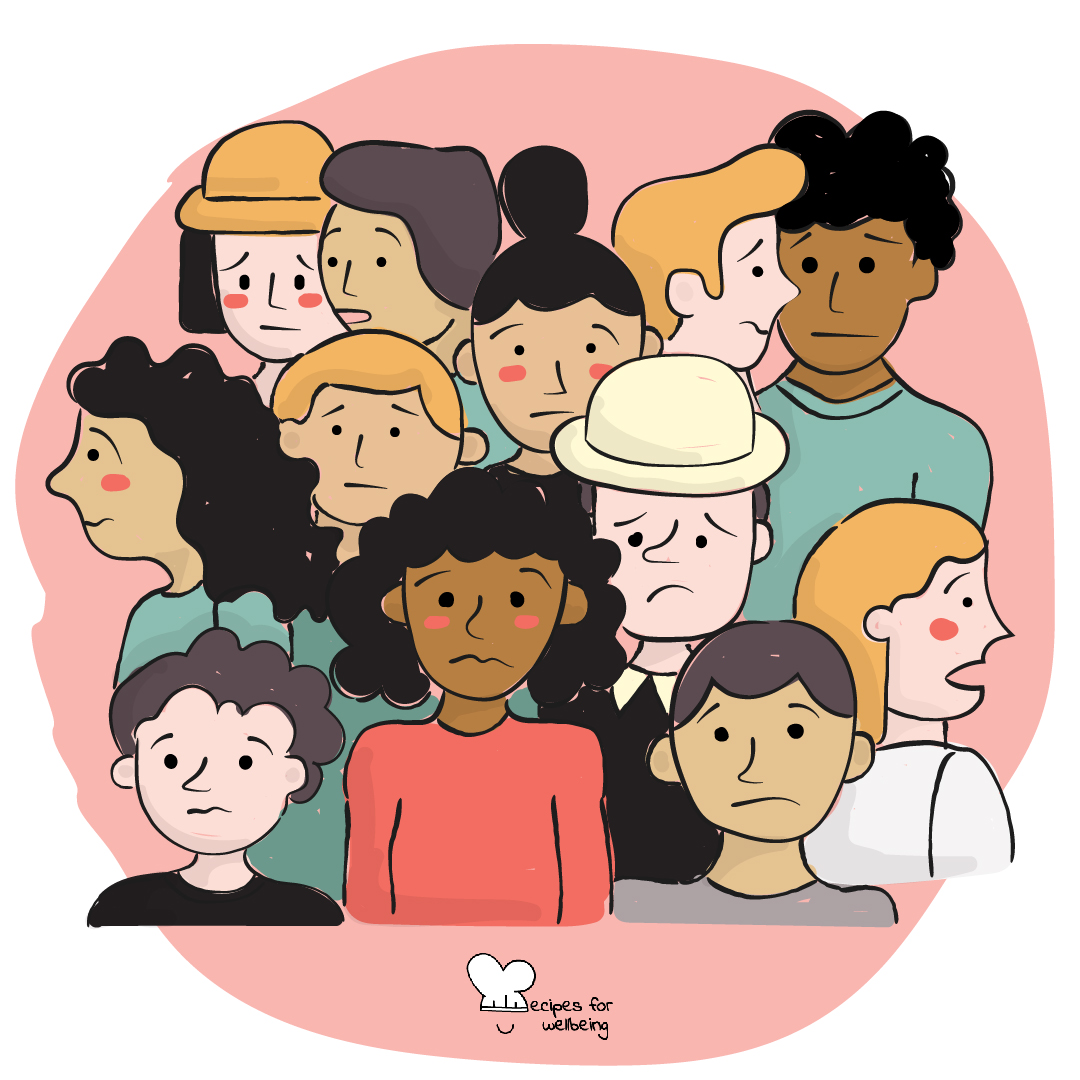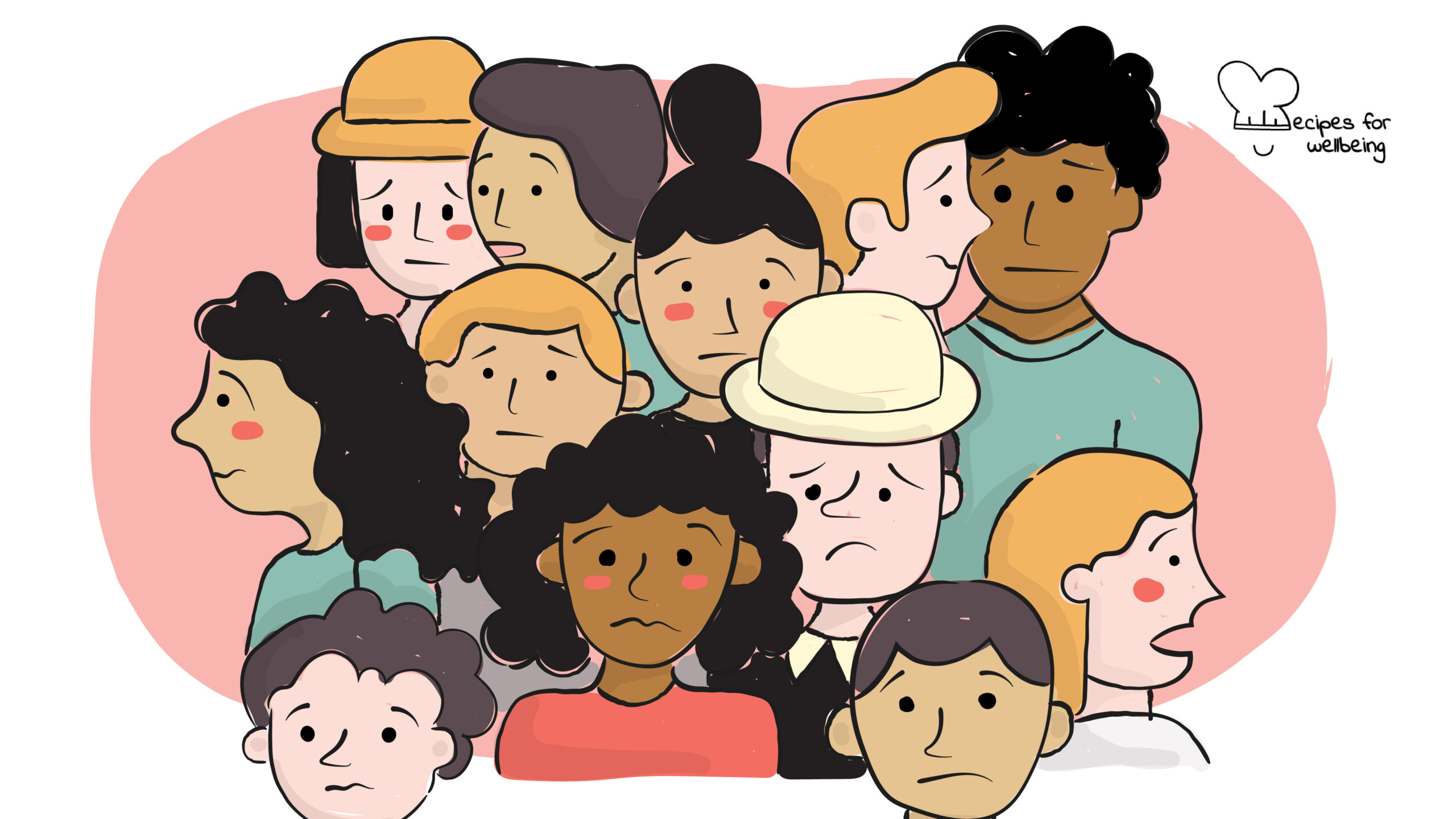
10 categories of fear
There is only one thing that makes a dream impossible to achieve: the fear of failure. ―Paulo Coelho
👥 Serves: 11-25 people, 2-10 people
🎚 Difficulty: Medium
⏳ Total time: 61-120 minutes
🥣 Ingredients: A group of people, sheets of paper (1 per participant), pens (1 per participant), outdoor space (optional), cymbal or Tibetan singing bowl (or other instrument to make sounds)
🤓 Wholebeing Domains: Awareness, Discomfortability
💪 Wholebeing Skills: Acceptance, Agency, Clarity, Letting go, Perspective, Stress management, Vulnera-bravery

10 categories of fear
📝 Description
A thought-provoking inquiry into fears to gain control over them.
Eleanor Roosevelt encourages us to “do one thing every day that scares you.” But that’s scary and most people don’t like to be scared. However, whenever we don’t confront them, we end up being victims of our own fears and let them control our lives in ways which we may not even realise. We may say no to a really exciting opportunity for fear of failing, or avoid hiring a really great team member for fear of looking incompetent. Whatever it is, we can learn to tackle our fears and anxieties with confidence and groundedness.
We experienced the following activity during a ChangemakerXchange summit where Julie Murat, a compassionate and mindful facilitator, guided us through an extremely stimulating and empowering journey into our fears. We recommend this activity for teams who want to unleash the creativity of their employees and unlock their full potential, or during trainings or summits to push participants beyond their fears into their purpose and life meaning.
If you want to find out more about this topic, we recommend reading: The Bravest You: Five Steps to Fight Your Biggest Fears, Find Your Passion, and Unlock Your Extraordinary Life by Adam Kirk Smith.
👣 Steps
Step 1 – Fear challenge
[Optional] A few days before your activity, invite participants to embark on a small fear challenge to help them be in the right mindframe for the journey you are about to take them on. Invite them to try out a few things that might make them feel very uncomfortable or anxious, such as:
- Ask for a free drink or pastry at a coffee shop.
- Lie down in the middle of the sidewalk.
- Give a hug to a stranger in the street.
- Do a stand up comedy or sing in front of strangers.
- Crash a wedding or birthday party.
- Deliver a speech on a topic you know nothing about.
- Spend the night sleeping rough.
- Ask for a much higher fee for a paid gig.
- Get into the news to talk about an issue you deeply care about.
- Spend an entire day in the city without a phone or watch.
You can be as creative as you wish. The idea is to push yourself to do something that will make you feel anxious or uncomfortable, even if the challenges above are not among your greatest fears.
Step 2 – Introduction (10’)
Ask everyone to sit in a circle while you introduce the 10 categories of fear:
- Fear of inadequacy
- Fear of uncertainty
- Fear of failure
- Fear of rejection
- Fear of missing out
- Fear of change
- Fear of losing control
- Fear of being judged
- Fear of something bad happening
- Fear of getting hurt
Step 3 – Individual reflection (10’)
Invite participants to reflect with pen and paper on the question: “What is your biggest fear in general in life?” using the 10 categories presented. You may encourage them first to write down the categories in terms of priorities: from the scariest to the least scary.
Step 4 – Back-to-back sharing (15’)
Invite people to form pairs and sit back to back. They will have 15 minutes of uninterrupted time (5-6 minutes each) to listen to the other person sharing about their biggest fears. The idea is to leave enough time to go a bit deep, and the back to back encourages introspection since you don’t feel the look of the other person on you. Once the time is halfway through, use cymbals or a Tibetan singing bowl to signal that it is time to swap.
Step 5 – Debriefing (15’)
Gather in the big circle and share thoughts on the activity.
Step 6 – Individual reflection (10’)
At this point, invite participants to reflect with pen and paper on the question: “What is your biggest fear when working with this team / in this organisation?” using the 10 categories presented.
Step 7 – Sharing (10’)
Gather in the big circle and allow everyone to share their biggest fears, creating clusters with post-its for most common fears in the group.
Step 8 – Brainstorming (20’)
Choose one of the most common categories and have an initial brainstorming session to gather ideas on how the fear could be overcome and how the organisation might implement mitigation strategies to support its team members. Wrap up with next steps and actions, if relevant.

